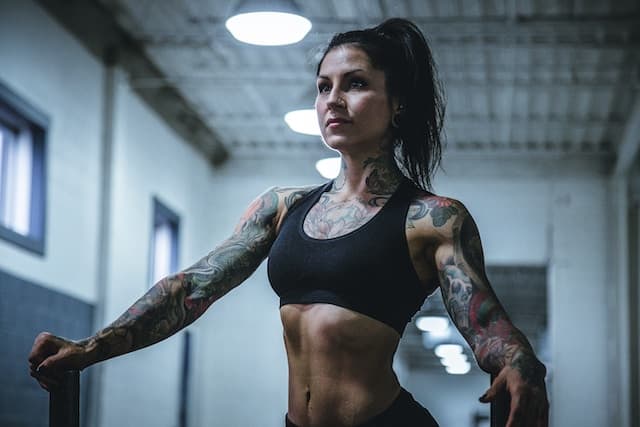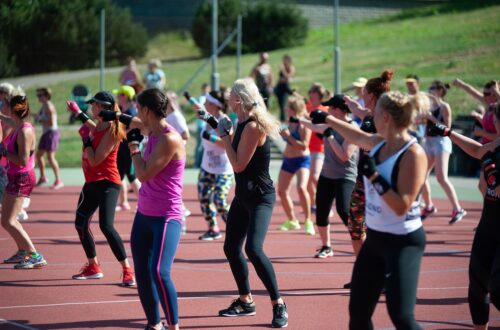
The Truth About Chest Workouts for Women: Separating Fact from Fiction
Women frequently neglect chest exercises when it comes to building a strong and sculpted upper body. However, understanding the significance of chest exercises and addressing common concerns can help women embrace these workouts and achieve their fitness goals.
With numerous misconceptions and uncertainties surrounding this topic, it’s essential to address the frequently asked questions (FAQs) related to women and chest exercises.
In this comprehensive blog post, we will delve into the top ten FAQs, providing informative and empowering answers to help women navigate their chest workout journey effectively.
From the suitability of workouts to reducing breast size, the importance of form, and exercises for specific goals, we’ve got you covered.
Let’s dispel the myths and empower women to embrace the benefits of chest workouts.
1. Can women perform the same chest workouts as men?
Yes, women can perform the same chest workouts as men. While men and women have slightly different strengths and muscle mass, both men and women can perform basic chest exercises to target and develop the chest muscles.
The pectoralis major, the primary muscle group in the chest, is responsible for various upper body movements and can be trained through exercises such as push-ups, dumbbell chest press, and chest flyes.
The focus should be on proper form, technique, and gradual progression tailored to individual fitness levels and goals.
2. How long does it take to see results from chest workouts?
The timeline for seeing results from chest workouts varies from person to person. Factors such as the frequency of workouts, intensity, nutrition, and individual body composition can influence the rate of progress.
With consistent training, proper nutrition, and a well-rounded fitness routine, noticeable improvements in muscle tone and strength can typically be seen within a few weeks to a couple of months.
It’s important to remember that each person’s journey is unique, and results may vary. Patience, persistence, and adherence to a balanced approach are key to long-term success.
3. Can chest workouts help reduce breast size?
Chest workouts primarily target the underlying chest muscles, not the breast tissue itself. While chest exercises can enhance the overall appearance and firmness of the chest area, they do not directly reduce breast size.
The size of breasts is determined by genetics, body fat percentage, and hormonal factors.
While chest exercises can enhance the overall appearance and firmness of the chest area, they do not directly reduce breast size.
However, incorporating regular exercise, including chest workouts, along with a balanced diet and overall body fat reduction, may contribute to a more proportionate appearance.
4. Is it necessary to use heavy weights for chest workouts?
The choice of weights for chest workouts depends on individual goals and fitness levels. While lifting heavier weights can help build strength and muscle mass, it is not necessary to lift extremely heavy weights to see results.
Proper form, technique, and muscle engagement are more important factors for muscle development.
Start with weights that challenge you without compromising form, and gradually increase the resistance as you progress.
5. Can chest workouts be done at home without equipment?
Absolutely! Chest workouts can be effectively performed at home without the need for equipment.
Exercises such as push-ups, chest dips using a chair or bench, and various plank variations can target the chest muscles without requiring any equipment.
These bodyweight exercises engage multiple muscle groups, including the chest, shoulders, and triceps. However, incorporating resistance bands or dumbbells can add variety and increase the intensity of your home chest workout routine.
6. How do chest workouts improve posture and body alignment?
Chest workouts strengthen the muscles responsible for proper posture and body alignment. By targeting the chest muscles, particularly the pectoralis major, exercises help counterbalance the forward rounding of the shoulders often caused by prolonged sitting and desk work.
Strengthening the chest muscles can promote better posture, improve shoulder stability, and alleviate muscle imbalances.
Improved posture not only promotes a confident appearance but also reduces the risk of musculoskeletal imbalances and associated discomfort.
7. Are there any specific exercises for targeting the inner chest muscles?
While it is not possible to isolate the inner chest muscles completely, certain exercises can emphasize the inner portion of the chest to a greater extent.
Cable chest flyes with crossed cables or dumbbell squeeze press (pressing dumbbells together) can help target the inner chest fibers.
However, it’s important to note that overall chest development requires a balanced approach with a variety of exercises targeting different angles. Focusing solely on the inner chest may result in an imbalanced physique.
8. Can chest workouts help relieve back pain?
Yes, chest workouts can contribute to relieving back pain when performed with the proper form and technique. Strengthening the chest muscles helps support the upper body, which can alleviate stress on the back muscles.
By improving posture, chest exercises help promote better spinal alignment and reduce the risk of muscle imbalances that may contribute to back pain.
However, it’s important to address any underlying causes of back pain and consult with a healthcare professional for a comprehensive approach to pain relief.
9. What should I do if I experience discomfort or pain during chest workouts?
If you experience discomfort or pain during chest workouts, it’s crucial to listen to your body. Discomfort or muscle soreness is normal, particularly when engaging muscles that may not be accustomed to the exercise.
However, sharp or intense pain, joint pain, or any unusual sensations should not be ignored.
In such cases, it is recommended to stop the exercise and evaluate the form and technique.
Modify the exercise or reduce the intensity, and if the pain persists, seek medical advice to ensure proper diagnosis and guidance.
10. How can I progress and challenge myself with chest workouts?
To progress and challenge yourself with chest workouts, there are several techniques you can incorporate. Gradually increasing the resistance or weights you are using is one way to progress.
You can also aim for more repetitions, reduce rest periods between sets, or try advanced variations of exercises such as decline push-ups or chest press on an unstable surface.
Additionally, incorporating supersets, drop sets, or incline/decline angles can add variety and intensity to your chest workouts.
Always prioritize proper form and gradually increase the challenge to avoid injury.
Conclusion:
Incorporating chest workouts into your fitness routine is essential for women aiming to build a strong and shapely upper body.
By addressing frequently asked questions, we have debunked myths, provided valuable insights, and offered practical advice for optimal chest training.
Remember, every woman’s fitness journey is unique, and embracing chest exercises can lead to improved strength, posture, and confidence.
So, seize the opportunity to sculpt a powerful and well-defined chest while unlocking your true potential.

You May Also Like

10 Quick and Easy Healthy Meal Prep Ideas for Busy Weekdays
21 October 2023
Bend and Stretch Your Way To a Better You: Top 10 Yoga Poses for Health
17 October 2023

One Comment
wrigley de catarina
wrigley de catarina